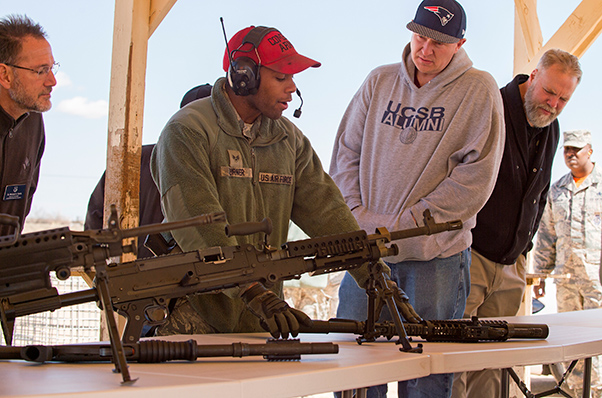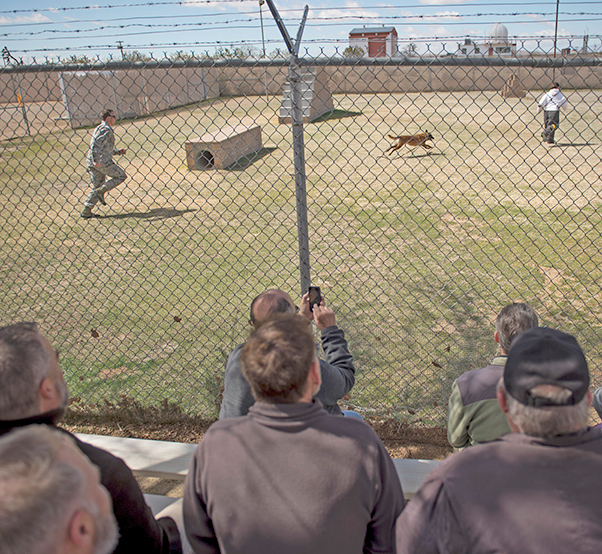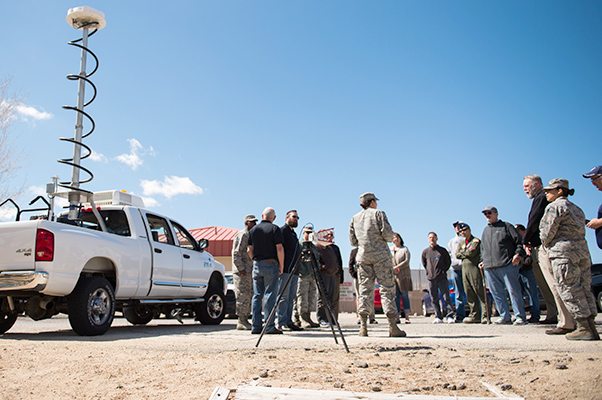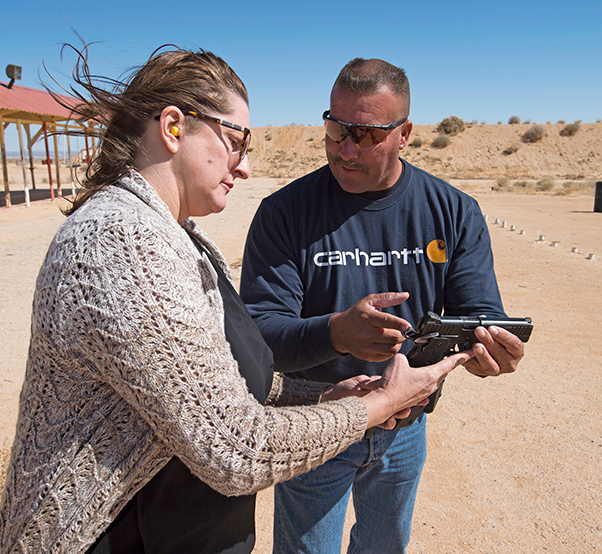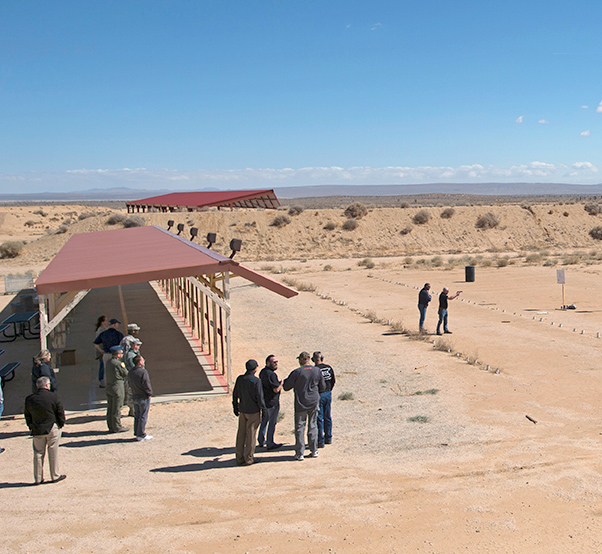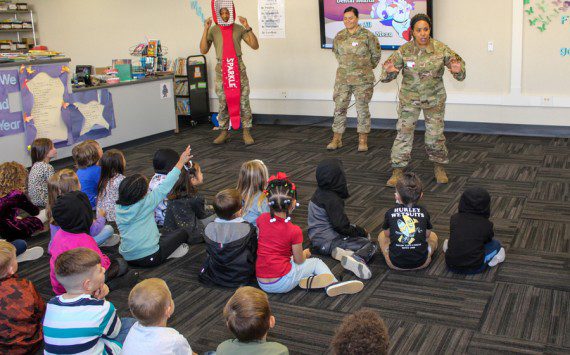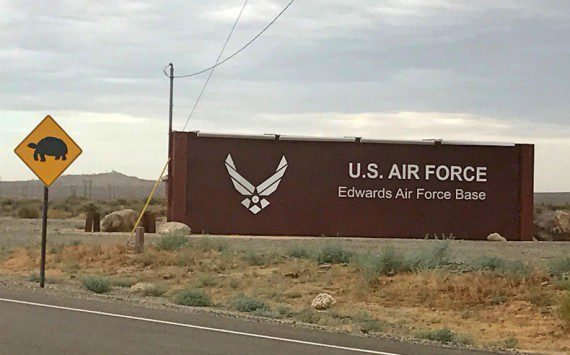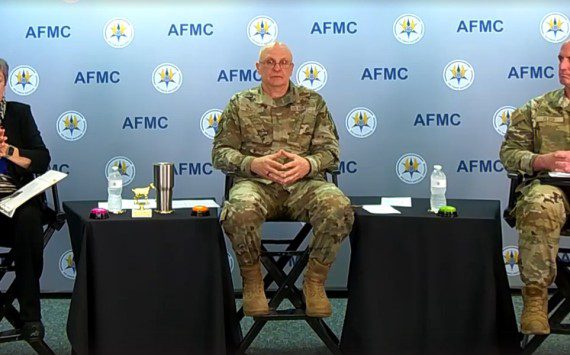The honorary commanders visited the 412th Security Forces Squadron’s K-9 Military Working Dog Section to learn about the K-9 mission and their critical support of outside agencies. The HCCs learned how both K-9 security forces defenders and their K-9 officers train, along with how the dogs are capable of apprehending and detaining individuals while serving as backup for their handlers.
A group of community leaders and their guests visited Edwards Air Force Base, Calif., as part of the Honorary Commanders Program March 16.
The Edwards HCC Program is designed to build awareness and working relationships between the base and the local community. Each honorary commander is paired with a group or squadron commander, or civilian leader. They hold their HCC title for two years.
Roughly every quarter HCCs get invited on base and provided a behind-the-scenes look at different command groups and how they operate. This time, the 25-plus honorary commanders and their guests were hosted by Col. George Tromba, 412th Mission Support Group commander, to get an inside look at the MSG mission.
The group visited the 412th Security Forces Squadron’s K-9 Military Working Dog Section to learn about the K-9 mission and their critical support of outside agencies. The group first toured the kennels and met all the military working dogs and their handlers. The HCCs learned how both K-9 security forces defenders and their K-9 officers train, along with how the dogs are capable of apprehending and detaining individuals while serving as backup for their handlers.
Edwards honorary commanders receive a tour and briefing of the 412th Communications Squadron’s spectrum analysis truck March 16, 2018. The truck finds and tracks down “rogue” signals that interfere with flight test data, voice and telemetry frequencies.
“The dogs are trained to bite and hold till the handler takes control of the situation,” said Tech. Sgt. Darren Pretlow, 412th Security Forces Squadron.
The HCCs and their respective military commanders also received a demonstration of the “six phases of aggression of suspect apprehension.”
“This showcases the dog’s ability to assist in apprehending and detaining individuals while highlighting the physiological deterrent of military working dogs,” Pretlow said.
Next, the HCCs received a tour and briefing of the 412th Communications Squadron’s spectrum analysis truck. The truck finds and tracks down “rogue” signals that interfere with flight test data, voice and telemetry frequencies. These rogue signals can degrade, limit, or even block the quality of test data streams that Edwards aircraft transmit to ground control rooms.
Senior Airman Dexter Turner, 412th Security Forces Squadron, teaches Edwards honorary commanders about the different firearms security forces can use March 16, 2018.
The Edwards flight test mission is to collect and process data to enable leaders to make the most informed decisions for the Air Force and the nation. If the test data is contaminated, this would require test teams to re-fly missions ultimately costing hundreds of thousands of dollars in redundant costs.
The group then traveled to the shooting range near the Rod and Gun Club. They were greeted by the 412th SFS commander, Maj. Gilbert Wyche, who briefed the group on current security forces vehicles, equipment and weapons. The HCCs watched a “Shoot, Move, Communicate, Proficiency, Fire Demonstration” that shows the tactical agility and security forces’ utilization of cover fire.
Cynthia Poole, 412th Test Management Group honorary commander, gets a lesson on firing a hand gun from Francis “Len” Paris, 412th Civil Engineer Group and Rod and Gun Club member March 16, 2018.
The honorary commanders traveled to the shooting range near the Rod and Gun Club where they received a firearms briefing and speed shooting demonstration by Francis “Len” Paris. Some of the HCCs took to the range for firearms practice.






